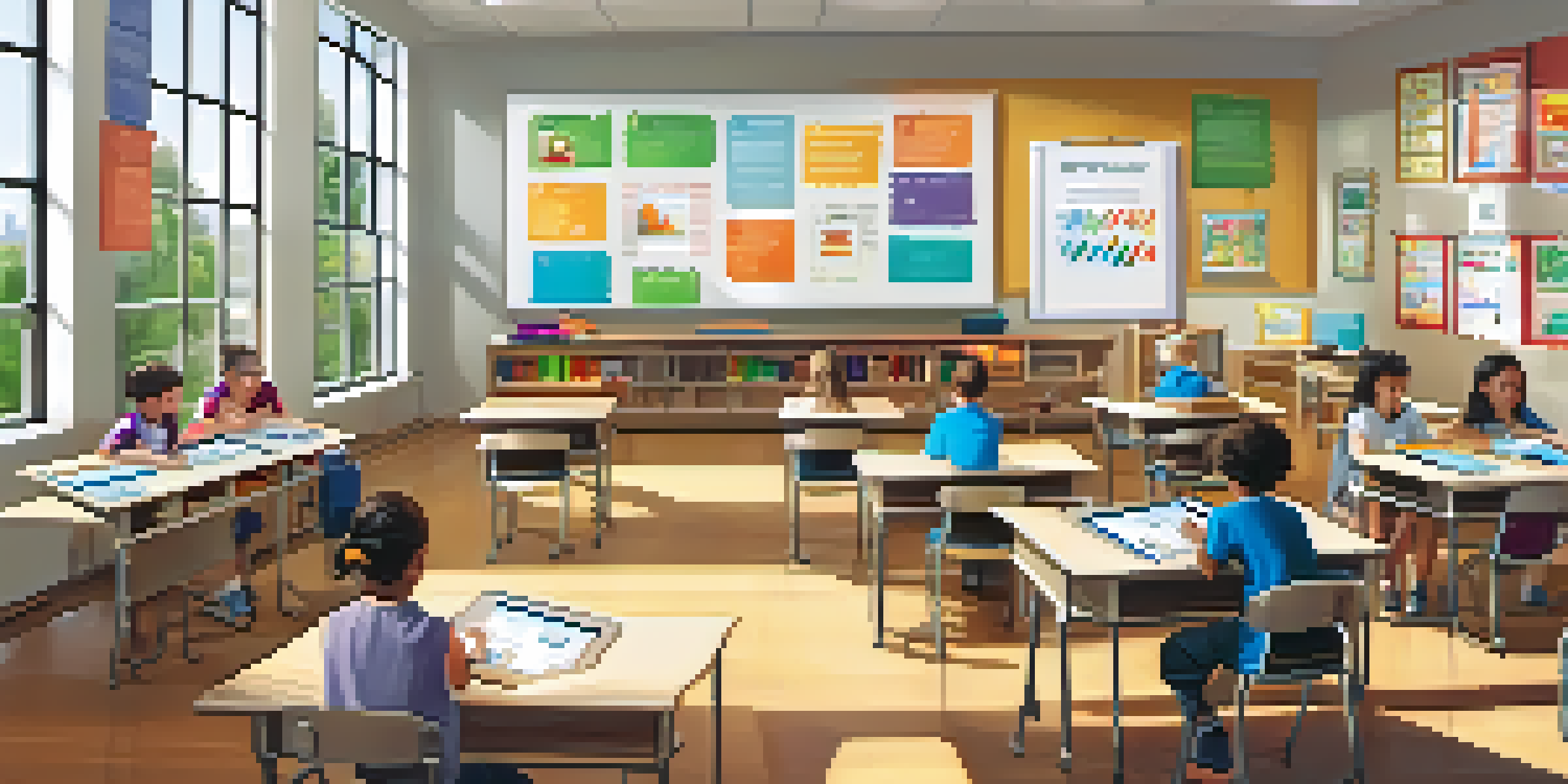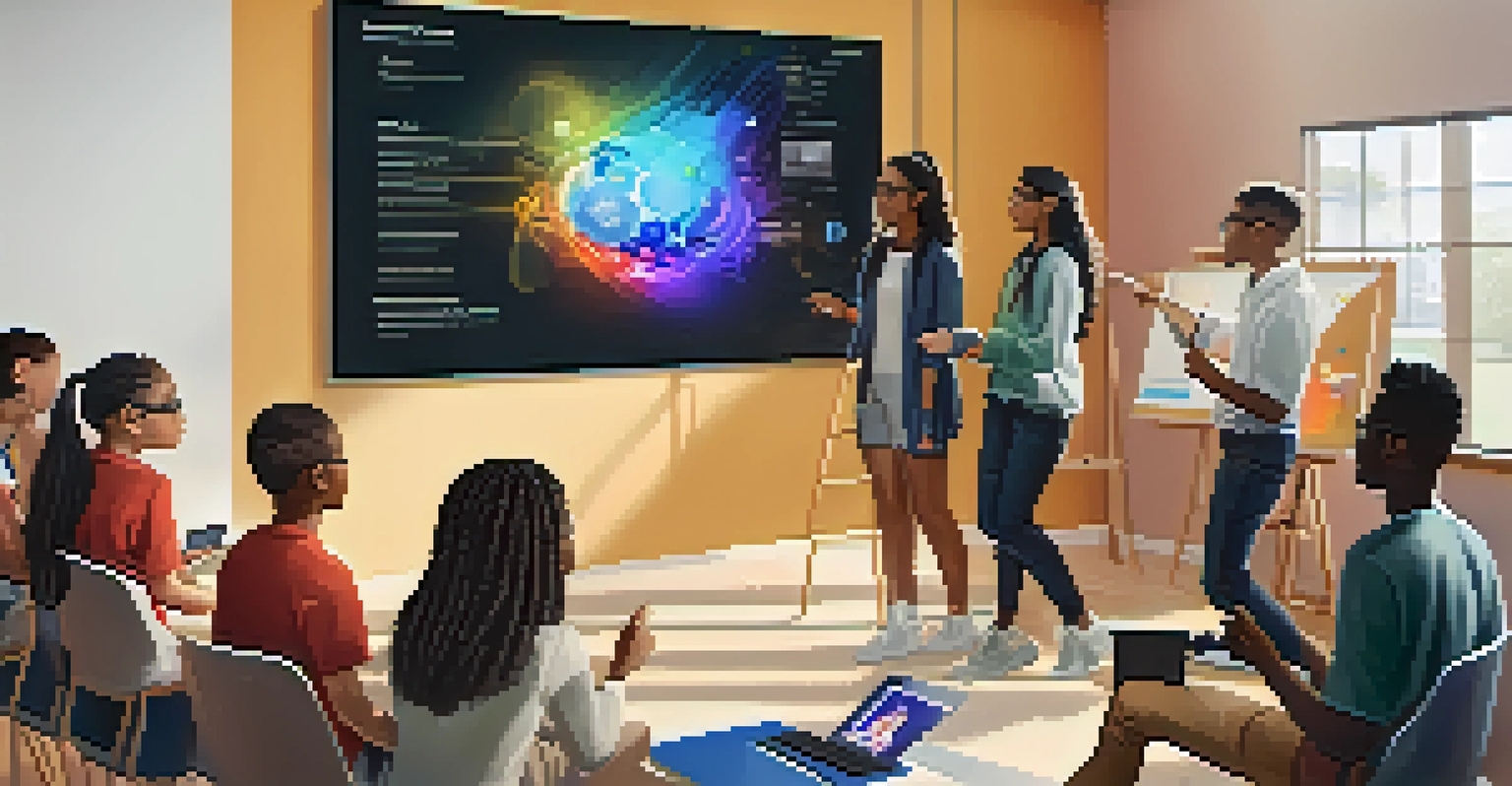The Role of Technology in Missouri's Educational Institutions

Overview of Technology in Missouri's Schools
In recent years, Missouri's educational institutions have increasingly embraced technology to enhance learning experiences. Schools across the state are integrating tools such as interactive whiteboards, tablets, and learning management systems. This shift aims to create a more engaging and efficient environment for both teachers and students. By leveraging technology, educators can better prepare students for a rapidly evolving digital world.
Technology is best when it brings people together.
Missouri's commitment to educational technology is evident in various initiatives, including grants and funding for schools to update their tech resources. For example, the Missouri Department of Elementary and Secondary Education has launched programs to support tech-driven learning environments. These efforts ensure that students have access to modern educational tools, regardless of their school district's budget constraints.
As technology continues to evolve, so does its role in education. From virtual classrooms to educational apps, the landscape of learning is shifting dramatically. In this context, it's crucial to understand how these advancements are shaping the educational experience in Missouri.
The Benefits of EdTech for Students
Educational technology, or EdTech, offers numerous benefits for students in Missouri. One of its key advantages is personalized learning, allowing students to learn at their own pace and according to their unique strengths. For instance, platforms like Khan Academy provide tailored lessons that help students grasp complex concepts and fill in knowledge gaps.

Moreover, technology fosters collaboration among students, enabling them to work together on projects and share ideas seamlessly. Tools like Google Workspace facilitate real-time collaboration, making group work more efficient and engaging. This collaborative spirit not only enhances learning but also prepares students for teamwork in their future careers.
Tech Enhances Learning in Missouri
Missouri schools are increasingly integrating technology to create engaging and efficient learning environments for students.
Furthermore, EdTech can improve accessibility for students with diverse learning needs. Assistive technologies, such as speech-to-text software and adaptive learning tools, empower all learners to succeed. By creating an inclusive environment, Missouri's educational institutions can ensure that every student has the opportunity to thrive.
Challenges of Implementing Technology in Schools
Despite the clear advantages, implementing technology in Missouri's schools presents several challenges. One major hurdle is the digital divide, which refers to the gap between those who have access to technology and those who do not. Many rural and low-income areas face difficulties in providing students with reliable internet access and up-to-date devices.
The future is already here — it's just not very evenly distributed.
Additionally, teacher training is crucial for successful technology integration. Many educators may feel overwhelmed by new tools or lack the necessary skills to utilize them effectively. Ongoing professional development and support are essential to empower teachers to embrace technology and enhance their teaching practices.
Finally, concerns about screen time and its impact on students' health and well-being cannot be overlooked. Striking a balance between technology use and traditional learning methods is vital. Schools need to develop guidelines that promote healthy tech habits while maximizing educational benefits.
The Role of Online Learning in Missouri
Online learning has gained significant traction in Missouri, especially in light of recent global events. With the rise of virtual classrooms, students have the flexibility to learn from home or anywhere with internet access. This model not only accommodates diverse learning styles but also allows students to balance their studies with other commitments.
Missouri's online learning programs include options for full-time virtual schools and blended learning environments, where students combine online and in-person instruction. This flexibility is particularly beneficial for students with unique circumstances, such as those involved in sports or the arts. By offering various learning formats, schools can cater to a wider range of needs.
EdTech Offers Personalized Learning
Educational technology provides personalized learning experiences, fostering collaboration and inclusivity among students.
However, online learning is not without its challenges. Students may face difficulties staying engaged and motivated without the structure of a traditional classroom. It's crucial for educators to implement strategies that foster interaction and maintain students' interest in the material.
Innovative Educational Tools in Missouri
Missouri schools are increasingly adopting innovative educational tools to enhance learning. One notable example is the use of gamification, which applies game design principles to educational contexts. By turning lessons into interactive games, educators can motivate students and make learning more enjoyable.
Another exciting development is the incorporation of virtual reality (VR) and augmented reality (AR) in classrooms. These technologies provide immersive experiences that can transport students to different places and times, making history or science lessons come alive. For instance, students can explore ancient civilizations or conduct virtual lab experiments, enhancing their understanding of complex subjects.
These innovative tools not only engage students but also foster critical thinking and problem-solving skills. As Missouri's educational institutions continue to explore new technologies, the potential for transforming traditional methods of teaching is limitless.
The Importance of Cybersecurity in Education
As schools in Missouri increasingly rely on technology, the importance of cybersecurity becomes paramount. With sensitive student data and educational resources stored online, protecting this information from cyber threats is crucial. Schools must implement robust security measures to safeguard against data breaches and ensure students' privacy.
Educators and administrators need to be aware of potential risks and incorporate cybersecurity education into the curriculum. Teaching students about online safety, password management, and recognizing phishing attempts is essential in today’s digital landscape. By fostering a culture of cybersecurity awareness, schools can better prepare students for a technology-driven world.
Challenges in Tech Implementation
Despite its benefits, implementing technology in schools faces challenges like the digital divide and the need for teacher training.
Furthermore, collaboration with cybersecurity experts can help schools develop comprehensive strategies for protecting their digital assets. By prioritizing cybersecurity, Missouri's educational institutions can create a safe and secure environment for both students and staff.
Future Trends in Educational Technology
Looking ahead, the future of educational technology in Missouri is filled with exciting possibilities. Artificial intelligence (AI) is emerging as a powerful tool that can personalize learning experiences even further. By analyzing student data, AI can recommend tailored resources and identify areas where additional support is needed.
Additionally, the rise of 5G technology promises to enhance internet connectivity, enabling smoother online learning experiences. With faster speeds and reduced latency, students can access resources and participate in virtual classrooms more effectively. This advancement will be especially beneficial in rural areas, bridging the digital divide.

As technology continues to evolve, Missouri's educational institutions must remain adaptable and open to new innovations. Embracing these trends will not only enhance the learning experience but also prepare students for the future job market, where tech skills are increasingly in demand.